How to Grow Peas
Inside: The 3 types of peas, how to grow peas, harvest peas, trellis peas, and what pests & diseases you might encounter while growing peas.
Growing peas is nothing short of wonderful.
Freshly shelled peas are something you just can’t buy at the store as their shelf life is very short. (I’m talking hours. They turn to starch very quickly after picking.)
This post will walk you through how to grow peas, how to trellis peas, how to harvest peas, plus I’ll share my favorite varieties of all 3 types of peas.
Peas are a cool season crop that usually does well in almost any soil type. There are some dwarf varieties, but most pea plants need to be trellised.
Peas do not like hot weather and will usually stop producing when the temperature gets above 75 degrees.
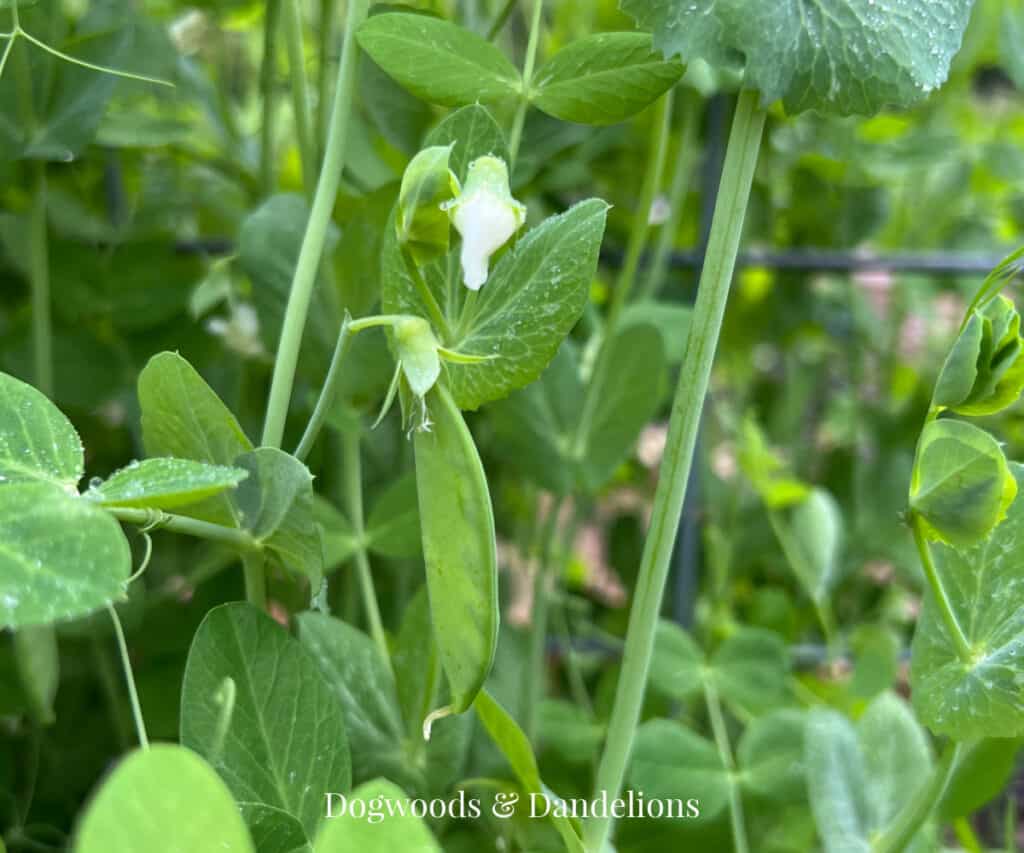
Affiliate Disclosure: Please note that some of the links in this article may be affiliate links and I may receive a small commission if you purchase something through a link. It will not change your cost. As an Amazon Associate, I earn from qualifying purchases. For more information, see my disclosures page.)
Types of Peas
There are 3 main types of peas-snap peas, snow peas, and shelling peas, also called English peas, sugar peas, or green peas. There are also sweet peas, but they are a flowering vine that doesn’t produce edible peas.
Snap Peas
Snap peas, also called sugar snaps, are one type of pea you eat pod and all. The pods are fleshy and sweet and the peas inside are plump and full.
Snow Peas
This is another type of pea that has edible pods. The difference between these and snap peas is that the peas in snow peas are very small and don’t fill out the pod.
The pods of snow peas are much thinner as well. These are often used in Chinese cuisine.
Shelling Peas
This type of pea requires the most work at harvest but they are well worth growing. Once picked, these peas should be immediately shelled and cooked, or blanched and frozen.
But the taste of fresh shell peas is just something you cannot buy anywhere. Nothing compares to freshly cooked peas straight from the garden.
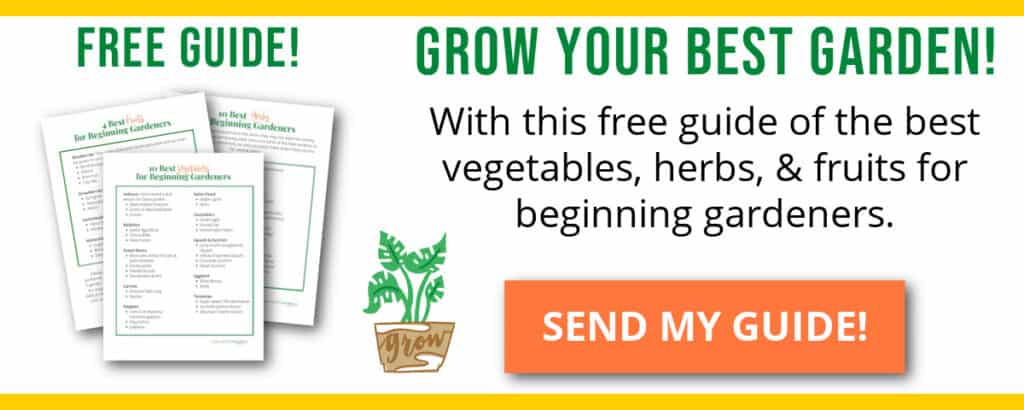
How to Plant Peas
Peas can be planted as soon as the soil can be worked in late winter or early spring. However, really cold soil will lead to slow germination.
An ideal soil temperature for peas is above 45 degrees. Growing peas in raised garden beds can help the soil warm up sooner and also provides good drainage.
You can also warm the soil up a little more quickly by planting in black plastic, though I do recommend putting mulch over the plastic once the soil warms up. As I mentioned earlier, peas don’t like hot weather and a layer of mulch will help keep the soil cool.
Peas should be sown directly in the ground in soil full of organic matter. It would be very difficult to get a substantial crop by starting pea seeds indoors. Well-drained soil is ideal otherwise the seeds may rot.
Be sure your planting area receives full sun most of the day. Most pea varieties can handle a light frost.
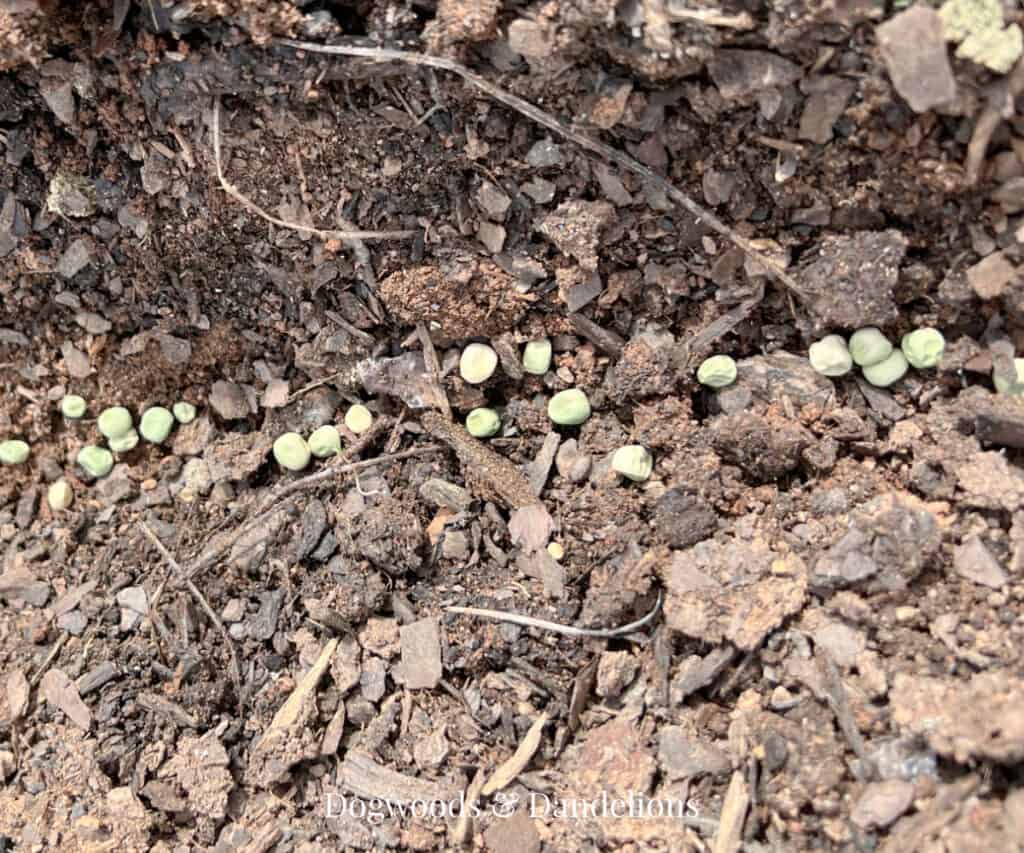
Most seed catalogs recommend planting peas in a single row. I don’t do single-row crops. It wastes too much space in the vegetable garden.
Sow peas by digging a wide furrow in the soil about 1-2 inches deep on either side of a trellis. Then drop the peas seeds in the row.
Wide rows make peas easier to plant and you can harvest more this way. I’ve never had a problem growing peas in wide rows.
You can also plant peas in a circle using a tomato cage as your trellis. This is a great method if you are utilizing the square-foot gardening method. You can grow a decent amount of peas in a small space.
To increase your harvest you can inoculate the seeds with a nitrogen-fixing product by sprinkling it into the row as you plant.
Peas (and beans) are able to pull nitrogen from the air and convert that nitrogen to a usable form of fertilizer for your garden. So planting peas can actually increase the health of your soil.
How to Grow Peas in Containers
Peas are well-suited to growing in containers. Be sure whatever container you choose has drainage holes. Fill the container with good quality potting soil, not dirt from your yard.
If you don’t want to have to trellis the peas, be sure to plant a variety that doesn’t grow more than 24″ tall. A tomato cage makes a good trellis for container-grown peas.
Growing peas in a container actually has a few benefits. If the container isn’t too large, you can move the peas to the shade once the weather gets hot. This will oftentimes allow your peas to keep producing for another week or two.
And you can easily monitor the moisture level of the soil if you are growing peas in a container near your house.
Fall Peas?
Peas can also be planted in late summer for a fall crop though they need to be started at least 2 months before your first frost. For best results choose varieties that mature quickly.
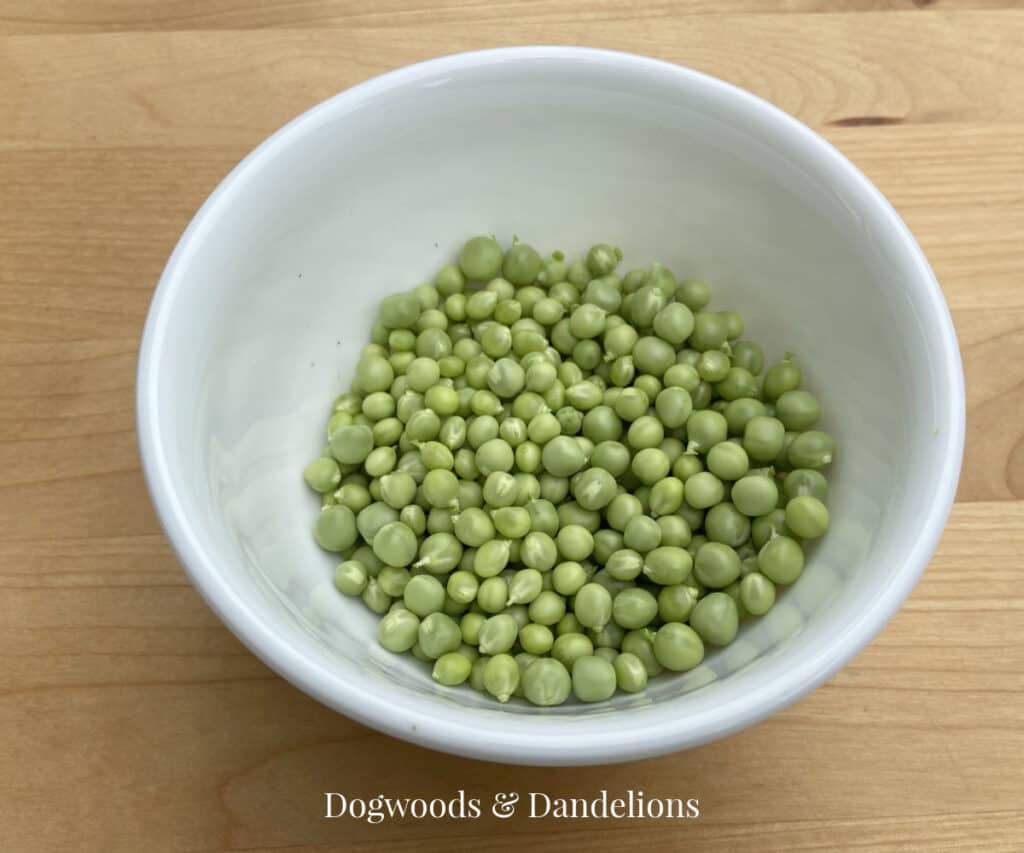
Fall planted peas need to be watered regularly and mulched well to help keep the soil cool. You may not harvest nearly as many peas as in the spring, but nevertheless, homegrown peas are always worth the trouble.
Trellising Your Peas
Since most peas need to be trellised, you will need to determine what type of trellis you will use. If you are only planting a few peas you can use a tomato cage, however, if you are planting larger amounts, you will need something bigger.
One easy way to make a pea trellis is to purchase several stakes from your local home improvement store and some trellis netting. You need a stake at least every three to four feet of garden space so plan accordingly.
You can also use rabbit netting between the stakes. I actually used this last year since I had some left over from another project. It worked surprisingly well.
Another option is to purchase cow panels from a farm supply store. These are super sturdy and will last for many, many years.
However, most cow panels come in 16-foot lengths so they will need to be cut to fit your garden area. This probably isn’t the most practical solution for a small gardener.
The one thing you want to remember is to be sure to use something with fairly large holes for your trellis.
Chicken wire and other small netting such as bird netting will make it very difficult to pick your fresh peas. These materials will also be very difficult to clean all the dead pea vines from later.
What to Plant With Peas (and What Not To)
Peas can be interplanted with radishes, lettuce, spinach, and carrots. I’ve read that peas can be planted with cucumbers, but I’m not sold on that idea.
Cucumbers tend to be a summer crop, while peas are a spring crop. If you’ve had success planting them together, please let me know.
Peas don’t do well with onions and garlic, so for the best harvests, leave some room between these crops.
How to Harvest Peas
Now that you know how to grow peas, you need to know when to harvest them. Peas need to be picked as soon as they are ready as they do not keep well on the vine. Leaving peas too long will cause the plant to stop producing prematurely.
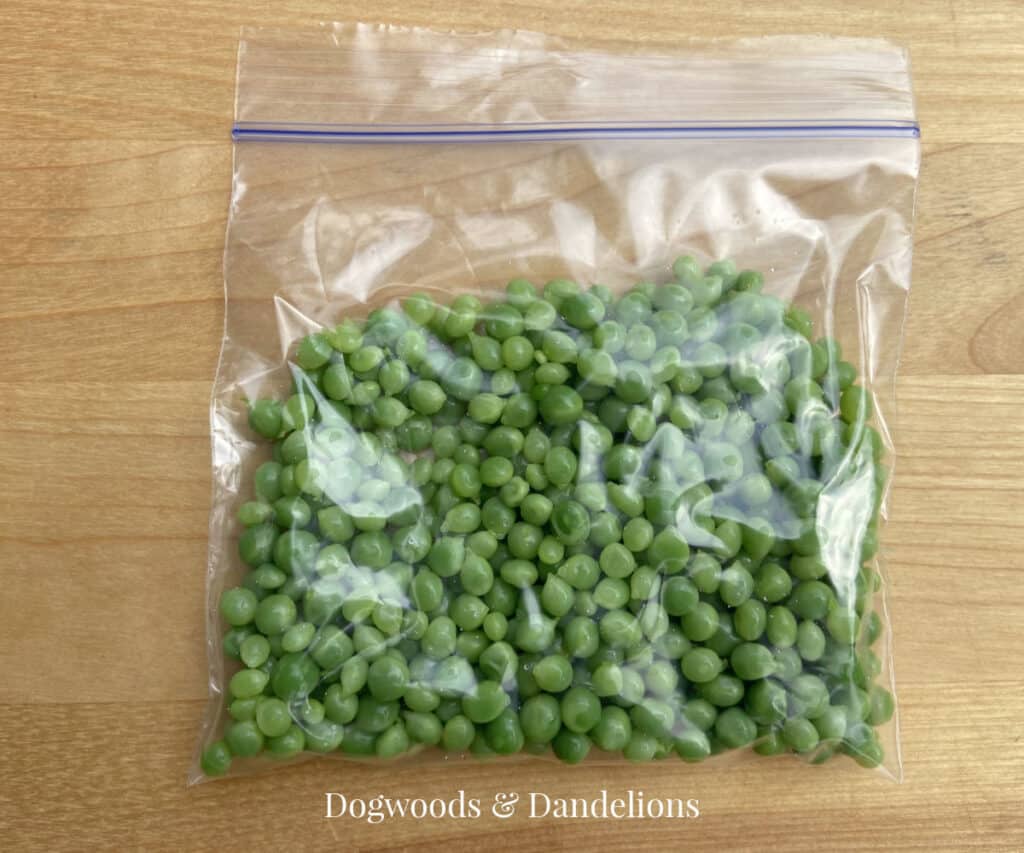
Snap peas are ready to harvest when the pods and the peas are plump. Some varieties have strings that need to be removed once harvested. You should be able to easily break the tip off and pull the string down the length of the pea.
Snow peas are ready to be picked as soon as the pod reaches the length stated on the seed packet. You want to be sure to pick them before the peas start developing. This can happen very quickly. Once the peas start swelling inside the pods, the pod itself quickly becomes tough.
Shelling peas or garden peas, also called sugar peas here in the south, should be picked as soon as the pods swell with the peas. Leave this kind too long on the vine and they quickly become starchy and bitter tasting.
It’s better to pick harvest pods too early rather than too late. (Though the chickens enjoy the big ones.)
When picking the peas, be gentle pulling the pods from the vines. It is very easy to pull the entire plant out of the ground. (Ask me how I know!)
I usually hold the vine with one hand and pull the pea pod off with the other. Sometimes, I will even snip them from the vine with a pair of my garden scissors.
The best way to store peas is in a plastic bag in the refrigerator. Try to use peas the same day you pick them as the sugar starts turning to starch as soon as they are picked.
Diseases That Can Plague Peas
Powdery mildew seems to be the most prevalent disease in peas. It is more common in humid areas and during rainy spring weather.
Neem oil usually works well to combat the problem. Planting disease-resistant pea varieties can also help prevent powdery mildew.
Trellising peas that need to be trellised will help ensure good air circulation which will also help prevent fungal diseases.
I have also heard that a mixture of 1 Tablespoon of baking soda plus 1/2 teaspoon of liquid soap added to one gallon of water will also work. Please note that if you try this, it is at your own risk. I have never used this combination, though I will most likely test it out this spring.
If your pea plants do end up with powdery mildew, do NOT compost them as the disease can persist in a compost pile. However, the peas from the plants are safe to eat.
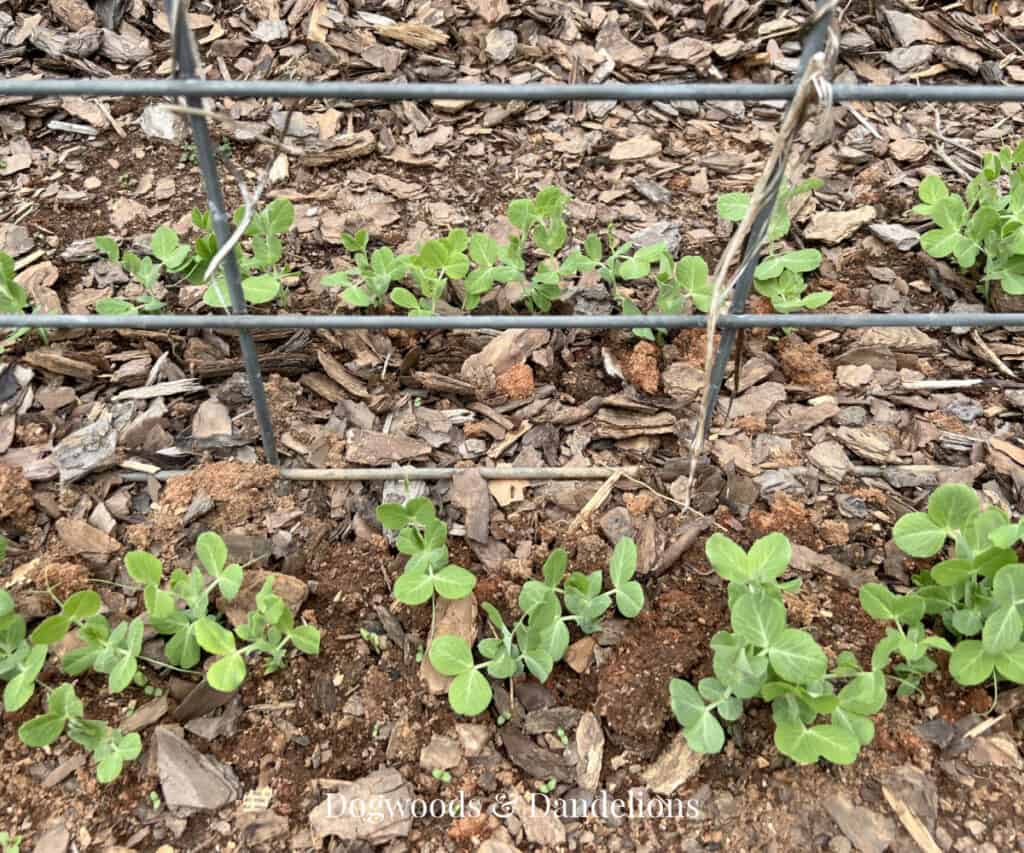
Pests
Usually, the biggest pest of peas is aphids. They love to feast on our fresh spring pea plants. The best treatment is usually an insecticidal soap.
I don’t recommend spraying them with water as some suggest, because this can increase the chance of powdery mildew.
Another pest of peas is bunnies. They love our pea plants too. And once they find your pea patch, it will be hard to keep them from returning.
You can try a spray containing cayenne pepper to keep them at bay, but it will have to be reapplied after every rainfall.
Favorite Varieties of Peas to Grow
Sugar Snap Peas
My favorite variety of snap pea is Super Sugar Snap. It produces high yields of plump pods that are ready in about 60 days. The pods are stringless and the plants are remarkably disease resistant. This variety is also very tall so it must be grown on a trellis.
I have also planted Sugar Sprint and Sugar Ann peas before. Sugar Sprint tends to tolerate hot weather a bit better than other varieties.
Gardeners in need of a snap pea with good disease resistance will appreciate Sugar Sprint too. Sugar Ann is the best choice for containers or smaller gardens as it doesn’t require staking.
Snow Peas
The only variety of snow peas I have grown is Mammoth Melting Sugar. This is a sweet, stringless variety of snow pea. These performed well in my garden, but overall, my family just isn’t a fan of snow peas.
If you love snow peas, other popular varieties include Oregon Giant and Oregon Sugar Pod II.
Sugar (Shelling or English) Peas
My favorite variety of sugar (shelling) pea is called Alaska. This is a small, sweet heirloom pea and my kids love to eat them fresh from the garden.
Last year, I don’t think I brought any indoors as they ate my entire crop raw! It is getting more difficult to locate Alaska pea seeds, but I have found them at my local Walmart. If you see this variety, I suggest you snatch the seeds up quickly.
I have also grown Lincoln peas with good success. Lots of other gardeners I know recommend Green Arrow peas.
It is an heirloom variety that has fairly good disease resistance. This is a compact variety that doesn’t need trellising.
What Kind of Peas Do You Grow?
So whether you choose to grow snap peas, snow peas, or shelling peas, I highly recommend giving peas a chance in your garden this year.
You can find many of these varieties at your local garden center. You can also find some of these varieties in small sampler packs at SeedsNow for as low as 99 cents a pack.
Have you ever grown peas before? What is your favorite variety?
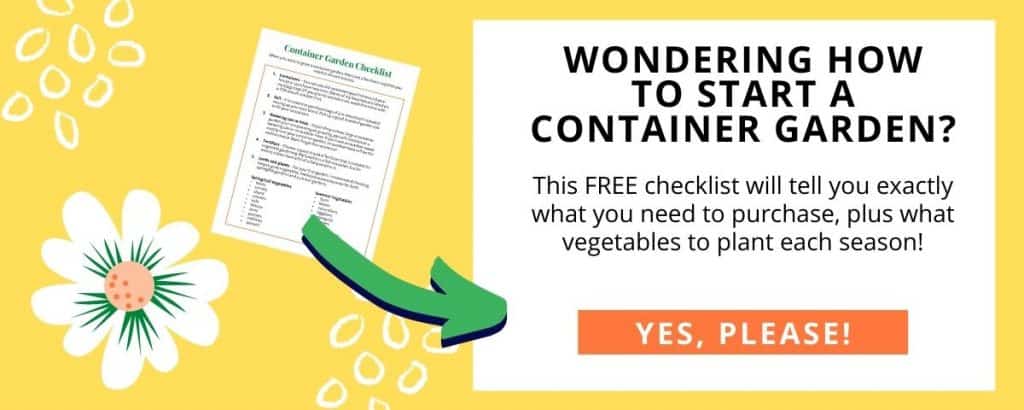
Related Posts
If you enjoyed this post, I would love for you to pin it for later.
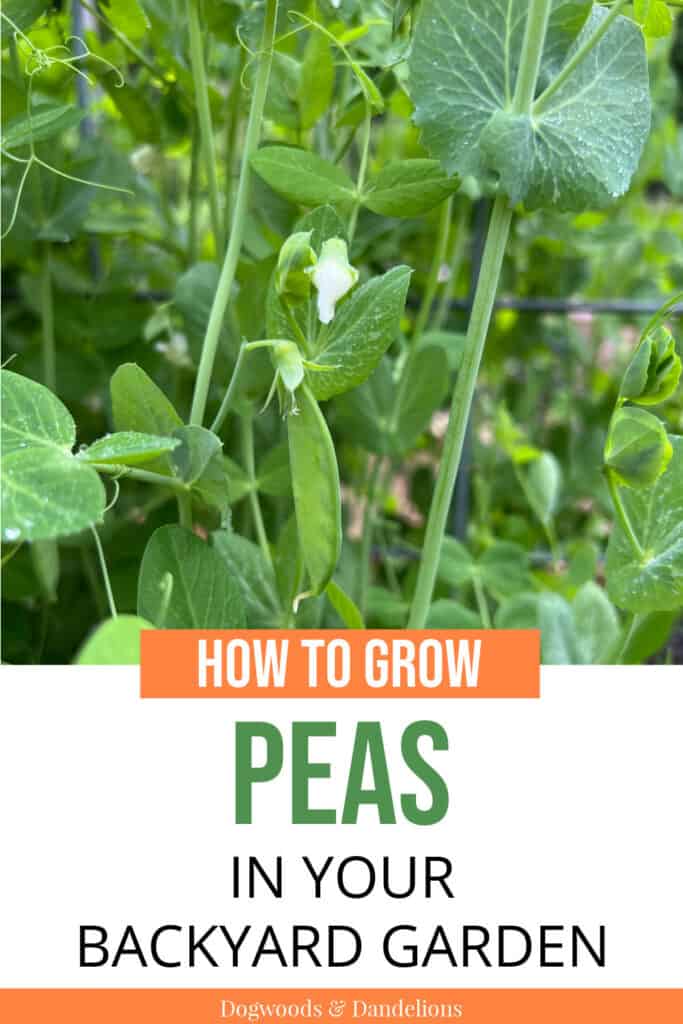
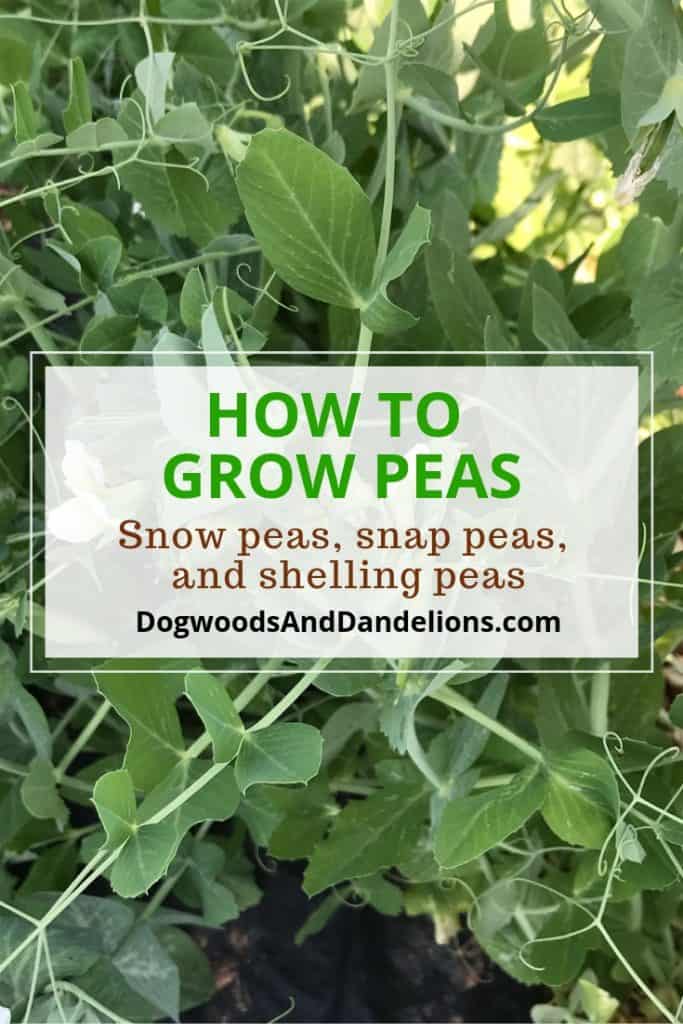
This post was linked to the Homestead Blog Hop.

I’m currently growing snow peas and cucumber together in the same raised garden box. So far they’re both thriving but will see how that goes with time.
I’m so glad you let me know that peas and cucumbers do well together from someone with personal experience. Thanks for taking the time to let me know!
Hello!
Would you be so kind to tell me where Seeds Now ship from? I have followed your link to the website and I can not find any information indicating this.
Also in your square foot diagrams, which direction yould you orient these plants (N, S, E, W)?
Thanks so much for EVERYTHING you do for me as a subscriber. I love your authentic voice.
🙂
Seeds Now is located in California. In the square foot diagrams, North is always at the top of the diagram. So taller plants will be planted to the North and won’t shade shorter plants. Thank you for bringing this to my attention. I need to update them, and when I do, I will definitely add that information. And thank you so much for your kind words. I truly appreciate them!